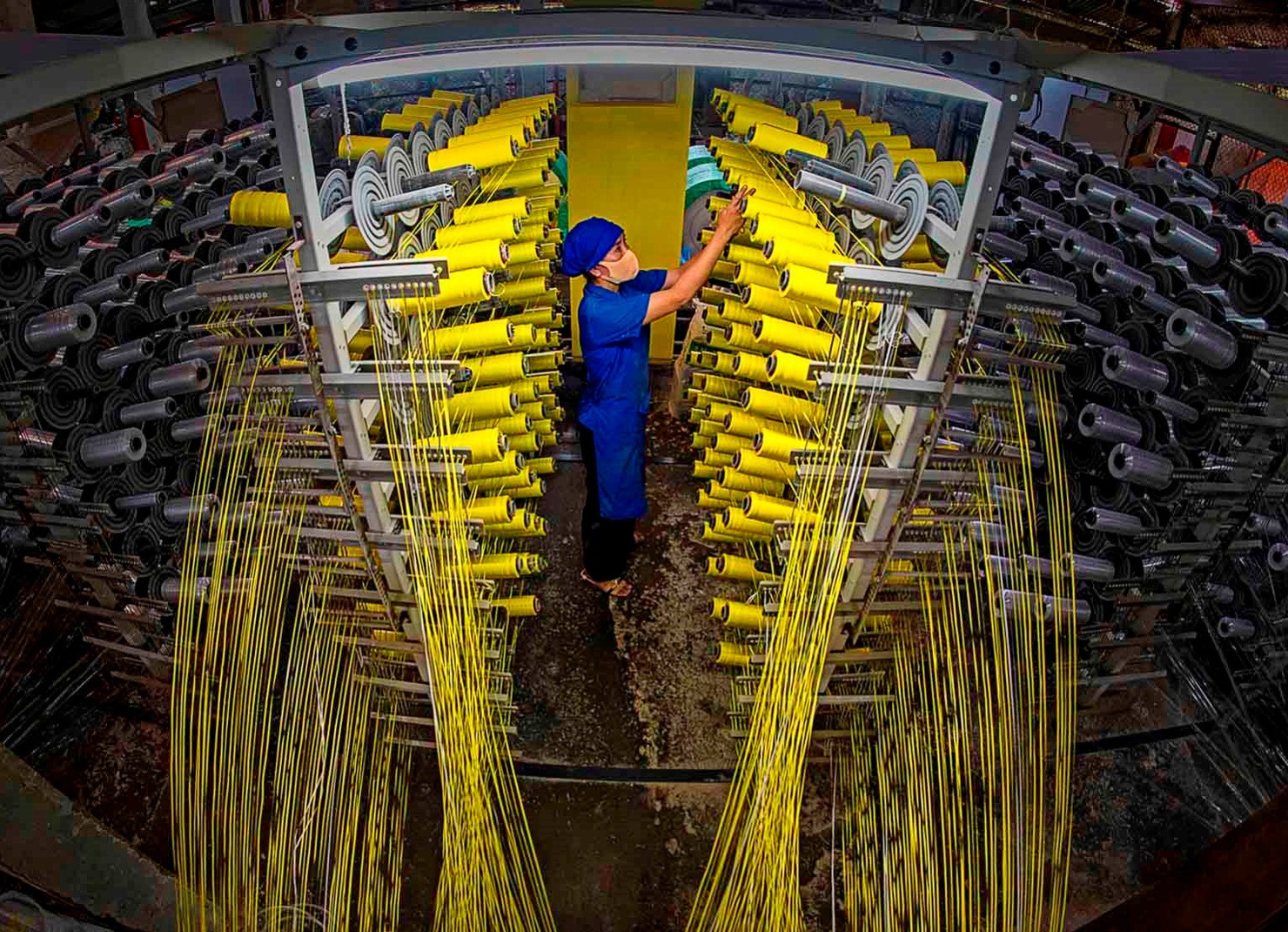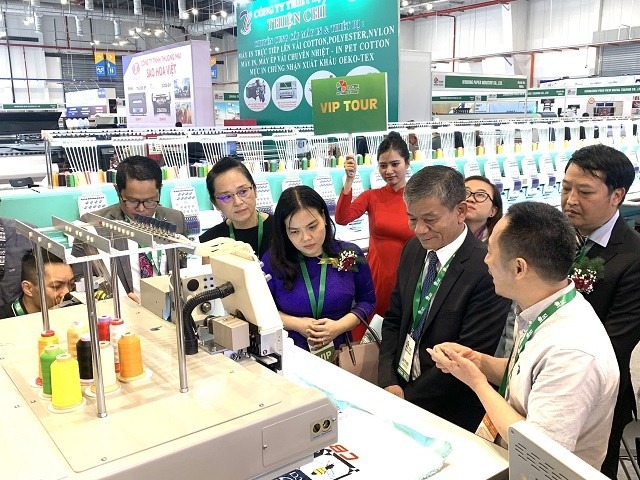22/10/2024
Driving the Green Revolution in Vietnam’s Textile Industry
The textile industry, despite critical contribution to the global economy, is among the the most polluting industries worldwide. Its resource-intensive supply chain and extensive chemical use generate large amounts of waste and toxic emissions, significantly affecting air, water and soil.
The industry’s annual carbon footprint, around 3.3 billion tons of CO2 emissions, nearly rivals that of the entire European Union’s 28 countries combined (3.5 billion tons). Moreover, the textile industry accounts for 5% of global waste.

Environmental damage occurs under varied intensity throughout different stages of a product’s lifecycle, with both producers and consumers playing distinct roles in the creation and usage of these products. The most vital direct impact consumers impose on the environment is during the use and disposal stages.
Given the growing awareness of sustainability, greening the textile industry offers a solution to its environmental challenges. It’s essential for businesses to adopt green production methods and opt for eco-friendly materials to create more sustainable products.
Consumers are increasingly aware of the importance of small actions contributing to global efforts in tackling pollution. For enterprises, aligning with this movement not only enhances brand image but also creates a competitive edge. Several countries have begun introducing legislation aimed at greening the textile industry as part of their sustainable development goals.
Notably, the European Union is leading the way with initiatives such as the European Green Deal, the Circular Economy Action Plan, and its Sustainable and Circular Economy Action Plan, and its Sustainable and Circular Textiles Strategy. Shifting towards green production is now essential for complying with sustainability regulations in these key markets.
The role of Vietnam’s Textile Industry in a greener future
In 2023, Vietnam’s textile industry ranked among the nation’s top four export sectors. generating $39.7 billion (over 11% of the country’s total exports). With around 7,000 active businesses employing over 3 million people, transitioning to green production will create numerous sustainable job opportunities, improve working conditions, and contribute to social welfare.
Opportunities for Vietnam’s textile industry
Current global supply chain trends present unique opportunities for Vietnam to green its textile sector:
-
- Free Trade Agreements: Recent trade agreements provide tax incentives for Vietnamese-origin products.
- Stable Business Environment: Vietnam offers a favorable economic and political climate, making it an attractive sourcing destination for fashion brands amid global geopolitical instability.
- Skilled Workforce: Vietnam’s workforce is well-equipped to handle complex, high-quality orders, providing a competitive edge.
However, low labor costs are no longer the primary advantage for Vietnam. Instead, becoming a sustainable supplier will be crucial in attracting customers and maintaining the industry’s growth in the future. Major fashion brands increasingly prioritize partners that demonstrate social and environmental responsibility. Vietnam’s labor and business laws, which are in line with international standards, positions its textile businesses well for complying with ethical business practices, giving them a competitive edge in the global market. As the economy recovers and consumer spending increases, there will be a growing demand for green products from companies that prioritize social and environmental responsibility. In the medium to long term, the shift towards sustainable, eco-friendly products is expected to dominate.
Challenges in Green Practices
The shift to green production offers Vietnam’s textile industry the opportunity to improve its global standing, but it also comes with significant challenges.
-
- Limited Green Materials
Sourcing eco-friendly materials remains a major concern for businesses due to supply shortages and consumer preferences. Though there is growing support for sustainable materials, synthetic fibers dominate due to their lower cost, diverse design options, and abundant supply. According to Textile Exchange, plant-based fibers like cotton, linen, and hemp account for only 27% of global fiber production, with cotton making up 22%. In contrast, synthetic fibers, mainly polyester (54%) and polyamide (5%), make up 65% of the market.
-
- High Costs of Green Product
Green products often fall into a niche market due to their higher prices, making them less competitive against traditional products. The limited market demand poses a challenge for Vietnamese textile companies looking to go green.
-
- Lack of Clear Policies
Although there has been increasing attention on green economic growth, concrete policies for greening the text ile industry remain sparse. The absence of clear regulations for sustainable or green development means that businesses lack a legal framework and incentives to make the transition effectively.
-
- Limited Green Finance
The underdeveloped green finance system makes it difficult for textile companies to secure funding for green projects. Green financial tools, like green bonds or carbon credit trading, are still in their infancy. Furthermore, the long-term nature of green investments, which focus on sustainability and stable growth, requires tailored financial instruments to support such projects.
-
- Low Public Awareness
A lack of public awareness and participation in green growth and sustainable development issues limits the potential for societal change, which could further support the greening of the textile sector.
Key Recommendations for a Sustainable Transition
At the Policy Level:
-
- Develop Clear Green Standards: Vietnam must establish specific green standards and a roadmap for the textile industry, aligned with global trends in green economic growth. These standards should set clear short-term and long-term goals for each stage of the transition, coupled with financial mechanisms such as public-private partnerships (PPP) and green finance initiatives.
- Encourage Green Investment: The government should introduce policies that encourage green investment through tax incentives, land access, and preferential credit for businesses that adopt green practices. For example, reducing VAT or corporate income taxes for green product manufacturers and offering training subsidies for developing a green workforce.
Strategic Development:
-
- Thorough Industry Assessment: Government agencies should conduct a comprehensive assessment of the textile industry’s current resource use, waste generation, and supply chain structure.
- Engage Stakeholders: Involve key stakeholders, including suppliers, manufacturers, retailers, consumers, and waste management facilities, in the transition process.
- Clear Goals: Set measurable and realistic targets for reducing resource consumption, minimizing waste, and increasing the use of recycled materials. Flexible timelines and financial incentives for businesses that excel in the green transition are crucial.
Technology and Investment:
-
- Green Technology Adoption: Focus on research and adoption of green technologies like renewable energy, efficient water usage, resource management, and waste recycling technologies. Collaboration with partners and equipment suppliers is key to acquiring and transferring advanced technology in the sector.
Financial Solutions:
-
- Develop Green Financial Tools: Vietnam should work on developing green financial instruments such as green bonds and green credits to fund green textile projects. Collaboration with investors and other businesses can help pool resources and share financial risks.
Workforce Development:
-
- Skill Training: Address the skills gap that may hinder the green transition by offering training programs to educate workers on green standards, sustainable practices, and new technologies. Universities and training centers should collaborate with businesses to prepare a green labor force.
Market Development:
-
- Green Product Marketing: Strengthen communication strategies to raise public awareness about green textiles, encouraging consumer behavior shifts toward eco-friendly products. Marketing campaigns should highlight the circular nature of green products, offering consumers opportunities to participate in the production process by suggesting eco-friendly materials and green practices.
- Build a Green Consumption Culture: Changing consumption patterns to favor fewer, higher-quality green products over fast fashion is critical to the success of the green transition. Consumers must understand and accept the value of paying more for sustainable products.
Translated & edited from the article Phát triển kinh tế xanh: Cơ hội và thách thức đối với ngành dệt may Việt Nam
Share:











